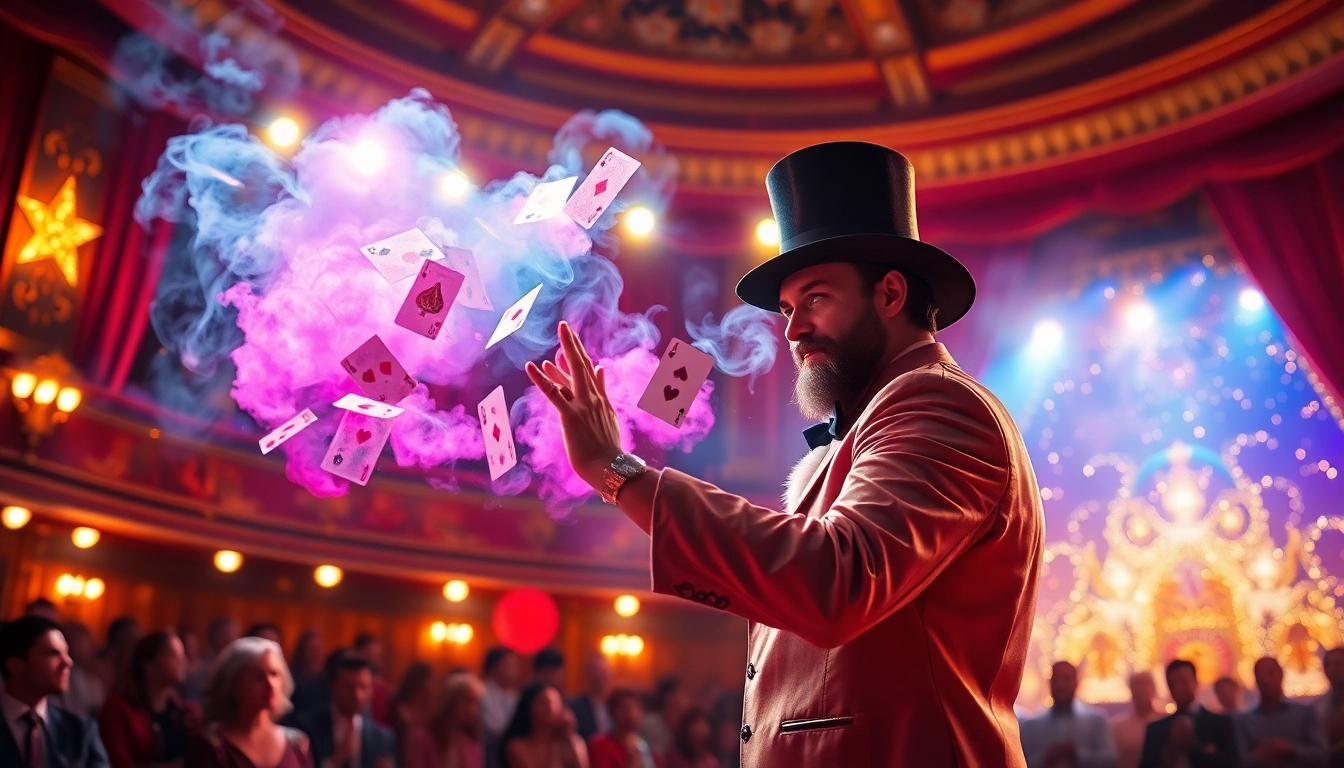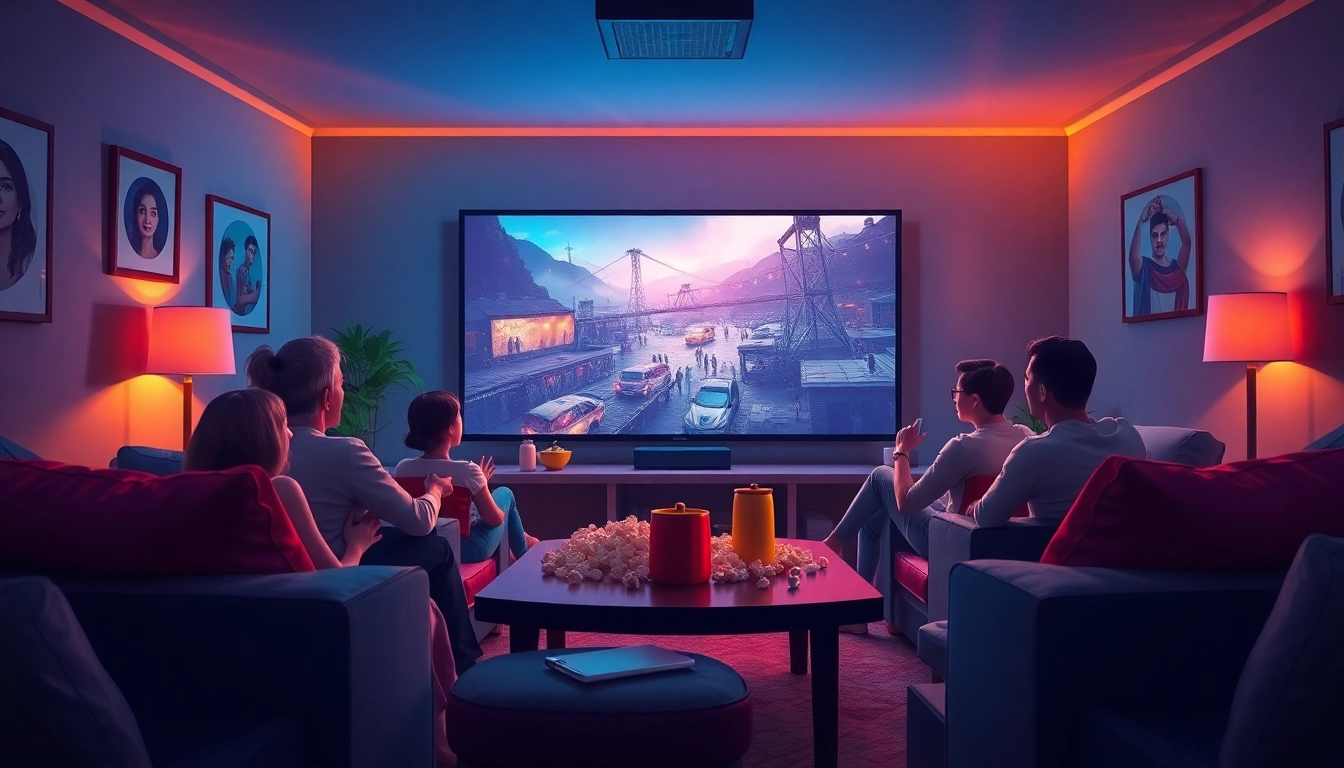Introduction to Magical Shows
In a world increasingly dominated by technology and instantaneous information, the enduring charm of magical shows captivates audiences across generations. Whether through a sleight of hand in a close-up performance or a grand illusion on stage, magical shows have a unique ability to transport viewers into a realm of wonder and curiosity. This art form is not merely about tricks or deceptions; it encapsulates storytelling, emotion, and skill. In this article, we will delve deep into the fascinating world of magical shows, exploring their history, key elements, various types, and what the future holds for this captivating form of entertainment.
What Are Magical Shows?
Magical shows are live performances that involve a series of tricks, illusions, and feats that defy explanation. These performances engage audiences by combining entertainment with an element of mystery, leaving spectators questioning the boundaries of reality. Each act is meticulously crafted, relying not only on the skill of the performer but also on the psychological engagement of the audience. Essentially, a magical show can be defined as a curated experience designed to amaze, amuse, and sometimes even inspire awe through seemingly impossible feats.
The History of Magical Shows
The lineage of magical shows can be traced back thousands of years. The earliest known form of magic dates to ancient Egypt, where magicians performed mystifying acts in front of the pharaohs and their courts. With the passage of time, magical performances evolved; during the medieval era, magic was often intertwined with religion and superstition. The 19th century brought about a significant transformation, characterized by the emergence of stage magicians like Harry Houdini and the famous duo of the masked magician.
The Golden Age of Magic in the early 20th century further solidified the place of magic in entertainment, with spectacular stage shows that captured the imagination of audiences worldwide. Today, the tradition continues with contemporary magicians who blend traditional techniques with modern technology to create innovative performances.
Why Magical Shows Have Endured
Magical shows have persisted as a form of entertainment for several reasons. The allure of the unknown and the thrill of being misled are fundamental human experiences. Audiences have an innate curiosity and desire to explore new dimensions of possibility. Additionally, magic transcends cultural barriers – it is universally understood and appreciated, making it a versatile form of entertainment suitable for all ages. Furthermore, the evolution of performance techniques and the integration of technology have allowed magicians to keep their acts fresh and engaging, thus continually drawing in audiences.
Key Elements of Engaging Magical Shows
Performance Techniques That Dazzle
The performance techniques employed in magical shows are critical to their success. Magicians often rely on a combination of misdirection, psychology, and physical skills to create their illusions. Misdirection is perhaps the most foundational technique, guiding the audience’s attention away from the method behind the magic. For instance, a magician may engage spectators with a captivating story or a humorous interaction to distract them while executing a complex maneuver.
Moreover, advanced sleight-of-hand techniques allow performers to execute tricks that seem impossible. This level of skill often requires years of practice, transforming the artist into a master of their craft. Acts involving card manipulation, coin tricks, or even large-scale illusions, demand not just physical dexterity, but an innate understanding of human perception and behavior.
Visual Effects and Stagecraft in Magical Shows
Visual effects and stagecraft play a significant role in enhancing the magical experience. The use of lighting, sound effects, and props can intensify the audience’s emotional response and create an atmosphere of suspense or thrill. A magician adept in stagecraft knows how to utilize these elements to elevate their performance, often transforming an ordinary illusion into a spectacular spectacle.
For instance, the incorporation of visual illusions, such as holograms or digitally enhanced imagery, can add layers of complexity to traditional magic. As technology continues to advance, magicians are increasingly integrating these elements to create immersive experiences that leave lasting impressions.
Creating an Immersive Audience Experience
A compelling magical show is not just about the performance; it’s about creating an immersive experience that resonates with the audience. Successful magicians understand the psychological aspects of performance, tailoring their acts to engage not just the visual but also the emotional and sensory faculties of the viewers.
This may involve interactive elements such as inviting audience members to participate, personalized tricks based on specific spectators, or storytelling that draws the audience deeper into the narrative of the performance. The more involved the audience feels, the greater the level of astonishment when the illusion is revealed, amplifying the overall impact of the show.
The Different Types of Magical Shows
Stage vs. Close-up Magical Shows
Magical shows can generally be categorized into two primary types: stage magic and close-up magic. Stage magic involves performing large-scale illusions in front of an audience, typically on a stage with elaborate sets and props. These performances often incorporate lighting, sound, and theatrical elements to enhance the visual spectacle. Examples include sawing a person in half or making an assistant disappear and reappear.
In contrast, close-up magic involves performing tricks at a much smaller scale, often inches away from the audience. This form often uses everyday objects such as coins, cards, and ropes, relying heavily on sleight of hand and psychological manipulation. Close-up magicians thrive on the immediacy and intimacy of their performances, forging a bond between themselves and their audience that is both personal and unforgettable.
Specialized Themes in Magical Shows
Within the realm of magical shows, specialized themes cater to diverse audiences and preferences. These themes can range from humorous performances to suspenseful, story-driven narratives. Some magicians focus on family-friendly themes with whimsical characters and light-hearted tricks, while others may explore darker themes that delve into the uncanny or mysterious.
Themed performances allow for creativity and innovation, as magicians often weave specific narratives or motifs into their acts. For example, a magician may create a show based on a fantasy realm, incorporating elements from popular literature or films to connect with contemporary audiences.
Family-Friendly vs. Adult Magical Shows
The audience dictates the type of magical show, with performances tailored to family-friendly environments or adult-only events. Family-oriented shows often feature cheerful themes, interactive segments, and tricks that are appropriate for all ages. These performances aim to create a magical experience for families and children, fostering a sense of wonder and joy.
On the other hand, adult magical shows may delve into more sophisticated themes or incorporate elements of humor and innuendo that resonate with a mature audience. These performances may engage with complex narratives and artful sleight of hand, providing entertainment that suits the sensibilities of adults seeking an evening of sophisticated amusement.
How to Choose the Right Magical Show for Your Event
Identifying Your Audience’s Preferences
Choosing the right magical show for your event requires a keen understanding of your audience’s preferences. Assessing the demographics, interests, and expectations of your guests can guide you in selecting an appropriate performer. For instance, if you’re planning a children’s birthday party, a family-friendly magician who specializes in colorful and engaging tricks would be ideal.
Conversely, for corporate events or adult gatherings, one might opt for a performer capable of blending humor with sophisticated illusions. Understanding who will be in attendance allows you to align your magical show with the preferences and expectations of your audience, ensuring a memorable experience for everyone.
Budgeting for a Magical Show
Budgeting is an essential aspect of planning any event, and magical shows are no exception. The cost of hiring a magician can vary widely based on several factors, including the performer’s experience, the complexity of the show, and the duration of the performance. When budgeting, it’s crucial to consider not just the performance fee but also additional factors such as travel expenses, equipment, and any special requests from the performer.
It’s advisable to request a detailed breakdown of the costs involved to avoid unexpected expenses. Additionally, researching various performers and obtaining quotes can help ensure that you find a magician who fits within your budget while still delivering a captivating experience.
Finding Reputable Performers for Magical Shows
Finding a reputable magician is essential to ensure a successful event. Start by looking for performers with positive reviews and testimonials, as feedback from previous clients can provide insight into their professionalism and skill level. Additionally, consider utilizing local entertainment agencies or event planning companies that specialize in magical shows; they often have established relationships with reputable performers.
Before making a final decision, it’s beneficial to watch video performances or attend showcases to see the magician’s style and technique first-hand. This will not only provide a glimpse into their acts but also help you gauge their ability to engage with an audience effectively.
The Future of Magical Shows
Innovations in Performance and Technology
The landscape of magical shows is ever-evolving, continually adapting to incorporate new innovations in performance and technology. The rise of digital media has opened up exciting opportunities for magicians. Live-streaming performances, interactive online shows, and augmented reality illusions are just some examples of how technology is reshaping the way magic is presented.
Magicians are also leveraging social media platforms to reach wider audiences and engage with fans in real-time. This not only provides exposure but also fosters community and allows for innovative forms of storytelling that were previously unimaginable. As technology advances, magicians who embrace these innovations can create experiences that captivate audiences in unprecedented ways.
The Role of Digital Platforms in Magical Shows
Digital platforms have revolutionized the way magical shows are marketed and delivered. Online streaming services and social media allow magicians to showcase their talents without geographical constraints, reaching a global audience. This democratization of performance means that talented magicians can build their brands independently, circumventing traditional entertainment channels.
Furthermore, online platforms allow performers to engage with audiences through interactive features, such as live chats during shows or personalized video responses to fans. This direct interaction fosters loyalty and enhances the magical experience, creating a two-way street between performer and spectator.
Engaging Future Generations with Magical Shows
The future of magical shows hinges on the ability to engage younger generations, ensuring that the art form continues to thrive. This requires magicians to remain relevant by embracing contemporary themes, narratives, and technologies that resonate with today’s youth. Educational initiatives, such as workshops and classes for aspiring young magicians, can inspire a new generation of talent.
Moreover, incorporating elements from popular culture, such as collaborations with film franchises or integrating aspects of gaming, can amplify interest among younger audiences. By fostering a connection to the art of magic and instilling appreciation for its history and creativity, the enchanting world of magical shows can flourish for years to come.

